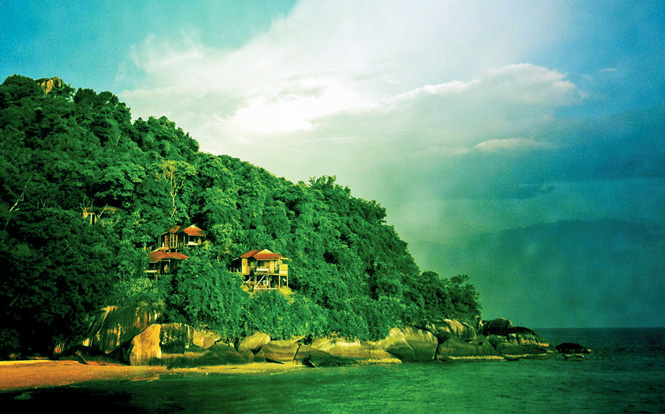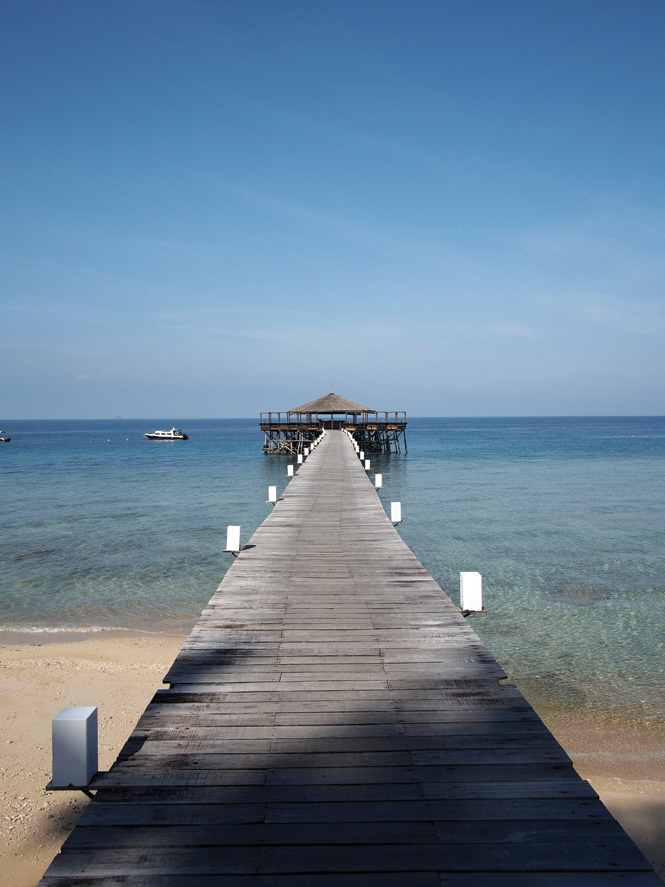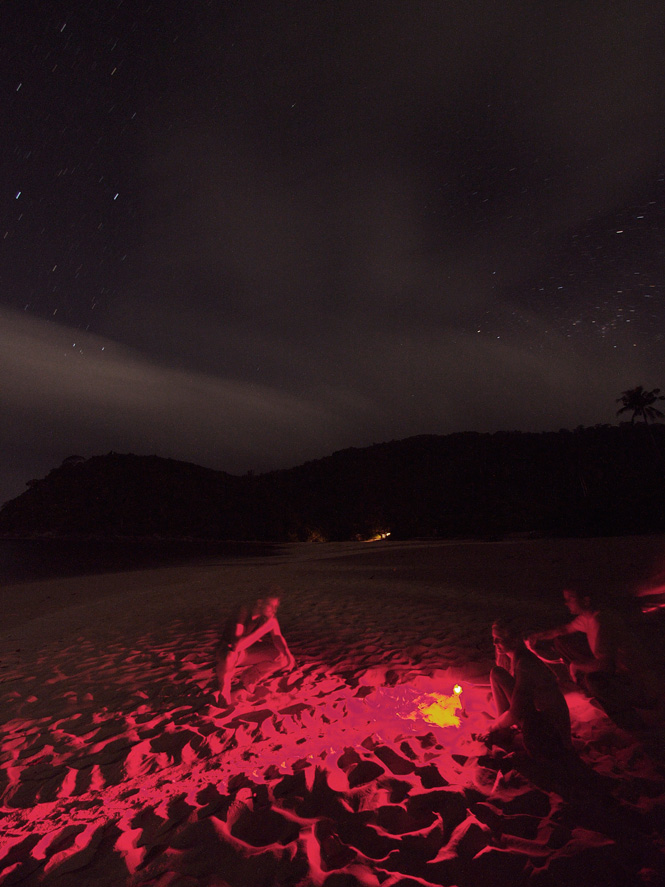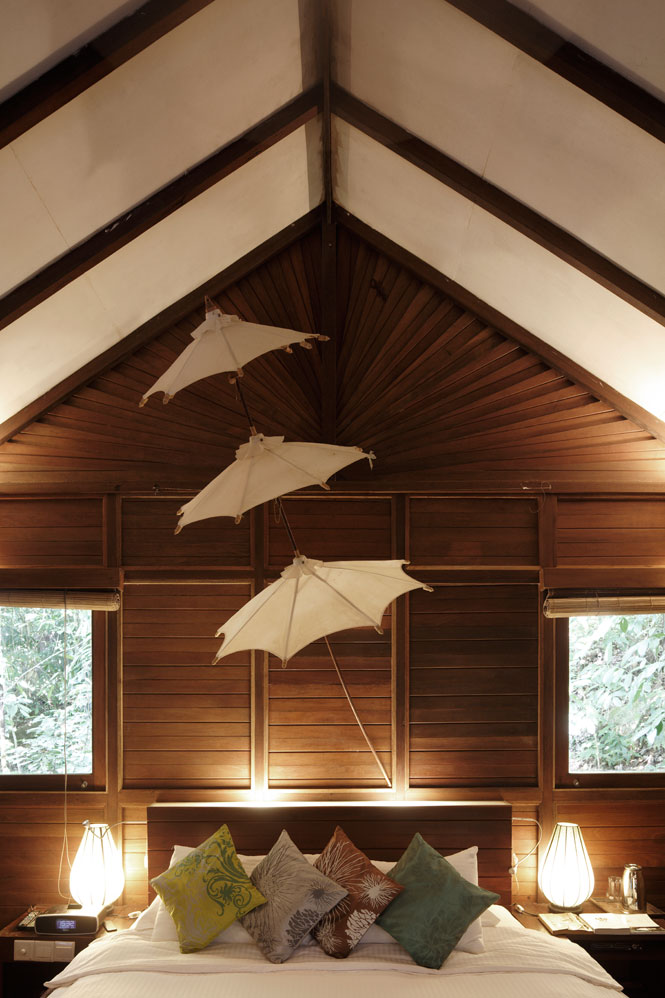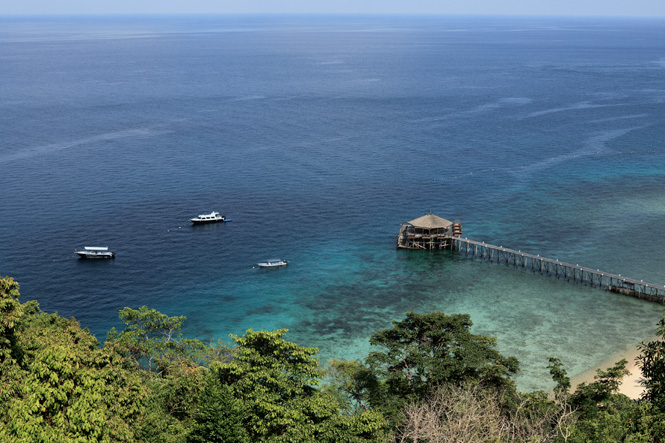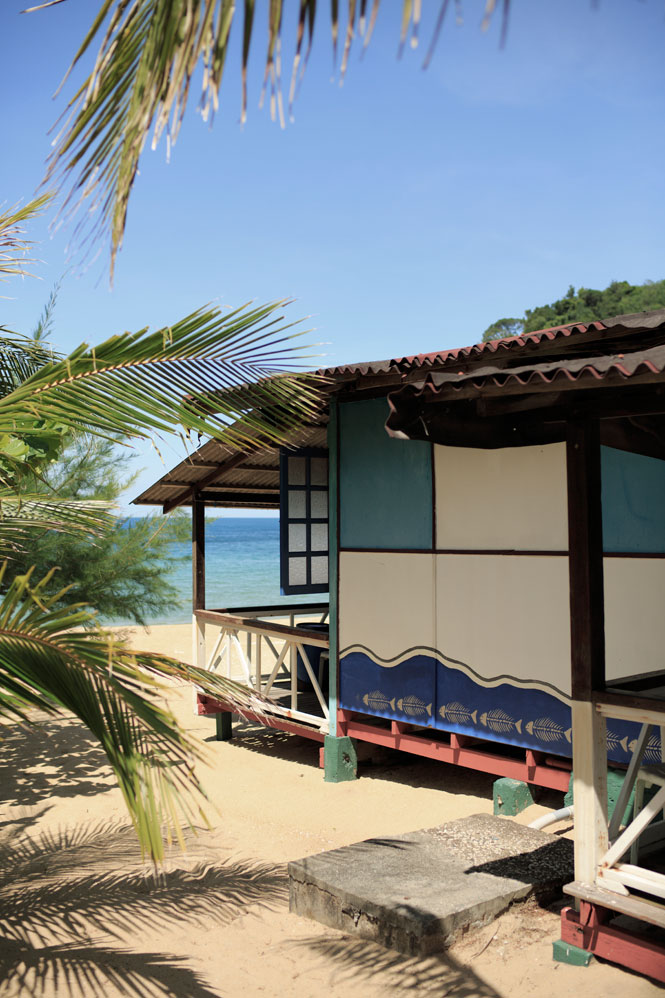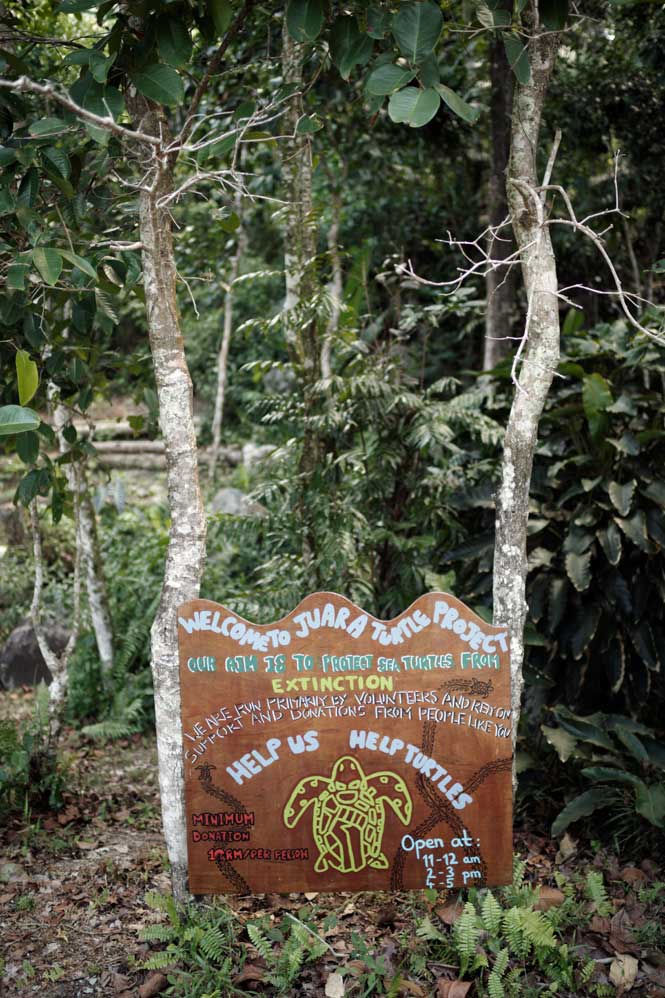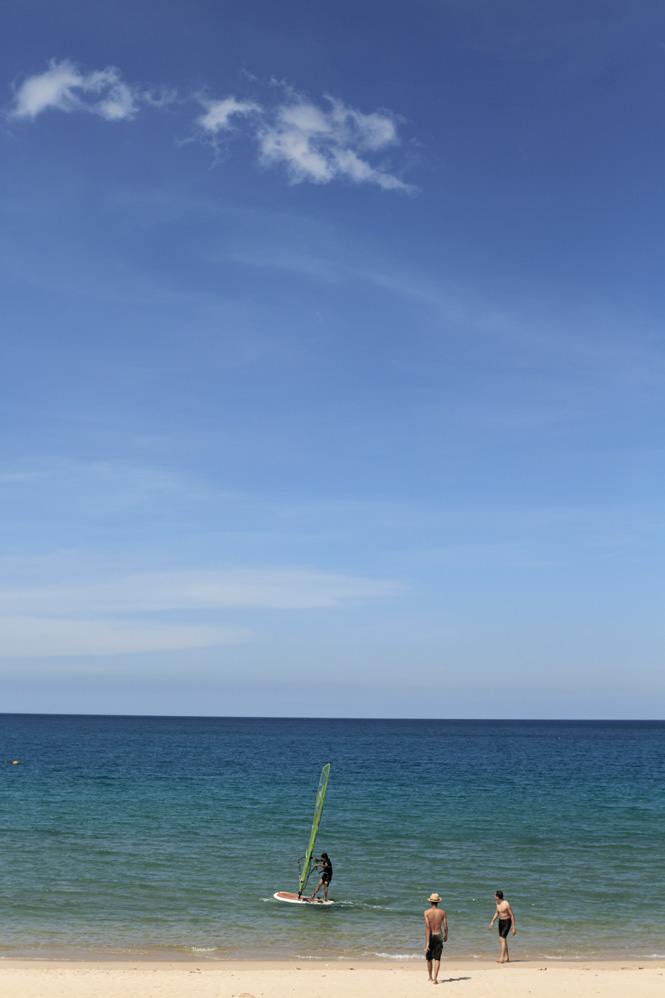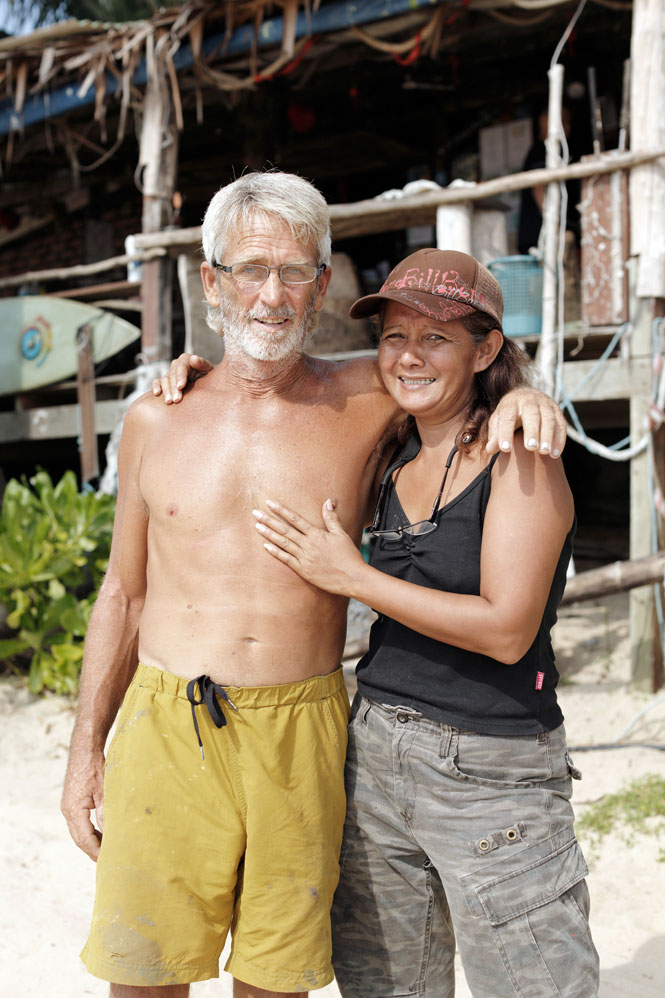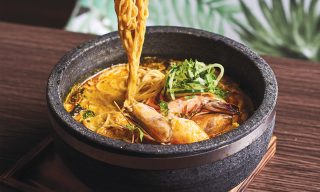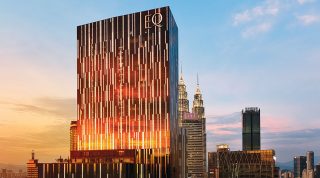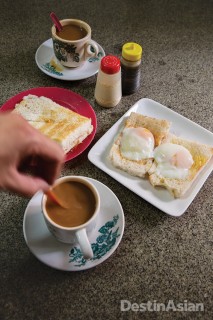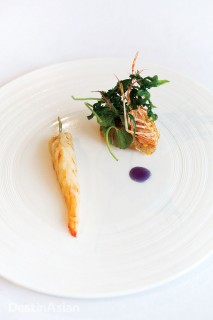Even at the six-year-old JapaMala, possibly Tioman’s most luxurious digs, great care was taken to build villas around nature. No trees were cut down and no rocks were moved in the construction process. The Hillside Sarang (sarang is Malay for “nest”) in which I’m staying is surrounded by such a verdant shroud of vegetation that I almost feel like a bird perched on a treetop. Sitting outdoors in the early mornings, I make it a point to give a chipper whistle every time I hear birdsong, which is often: Tioman is home to some 138 avian species. From a dreamy distance, I catch glimpses of the shimmering blue sea.
The scene is even more beguiling come sunset. From Mandi-Mandi, a restaurant built on stilts above the water, I watch the sky magically morph from blue to orange to red. And when darkness comes, the candles are lit, the barbecue pit sizzles with grilling fish, and the lovey-dovey couples around me sigh wistfully as they gaze at the stars.
After two nights at the JapaMala, I make my way to Juara, one of only two kampongs on the thinly populated east coast. Getting there involves hopping a boat back to Tekek, Tioman’s largest village—both the airport and ferry terminal are located there—and then hiring a taxi for the bumpy 30-minute drive across the island. The driver, Izzat, describes the harrowing, jungle-fringed route as “many adventure,” but says it is worth it because “Juara is the nicest part of Tioman.”
This is what Australian surfer Tim Brent tells me, too, when I grab lunch at the Beach Shack, his six-year-old budget chalet on Juara Bay. In the attached café, his wife Izan (a down-to-earth descendant of Malaysian royalty) cooks up homey local dishes and pub grub. Tim and Izan tell me they met in Cherating, on the mainland, but moved to Tioman because the water was cleaner and the waves were better for surfing. Their pillow-strewn café is as chilled-out as can be, with a bluesy soundtrack accompanied by the chattering of the family’s pet macaques, Endon and Cinta.
Tim believes that there’s something magically restorative about the island. “For some people, travel is a way for them to sort their lives out. Tioman is one of the few places left in the world that provides the peace and quiet for that. I’ve had guests who came here with the intention of only staying a few days, but ended up being here for months.”

